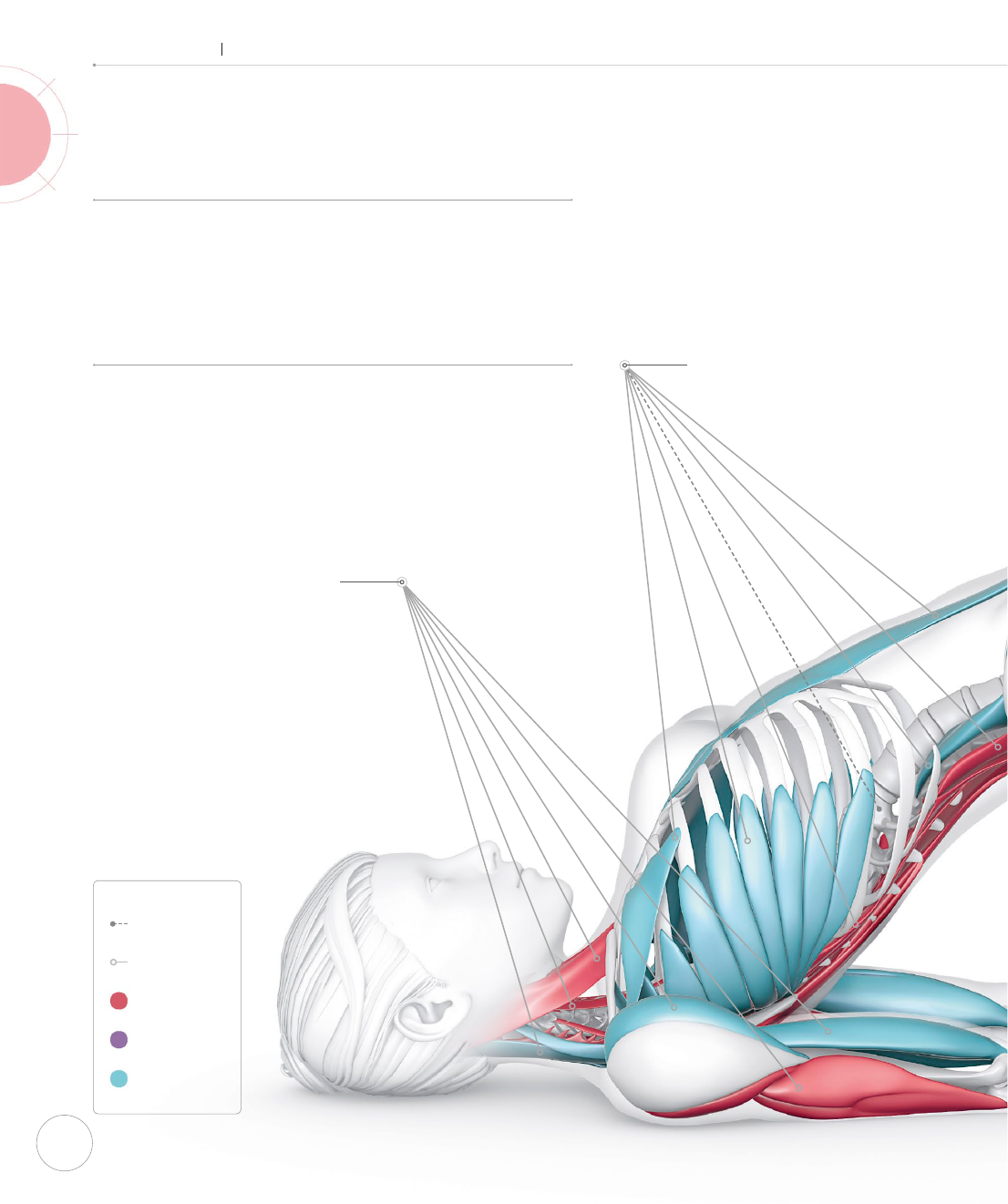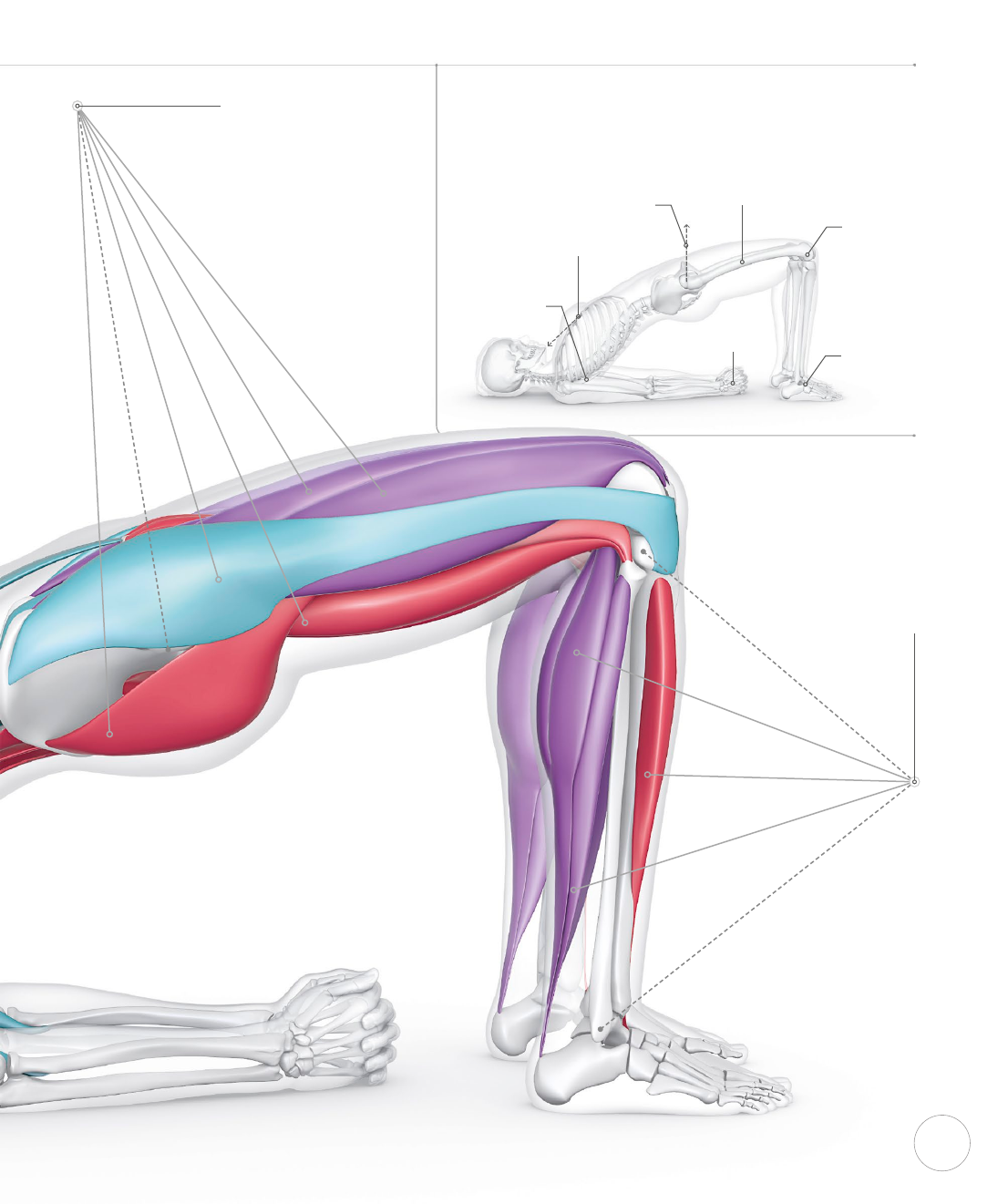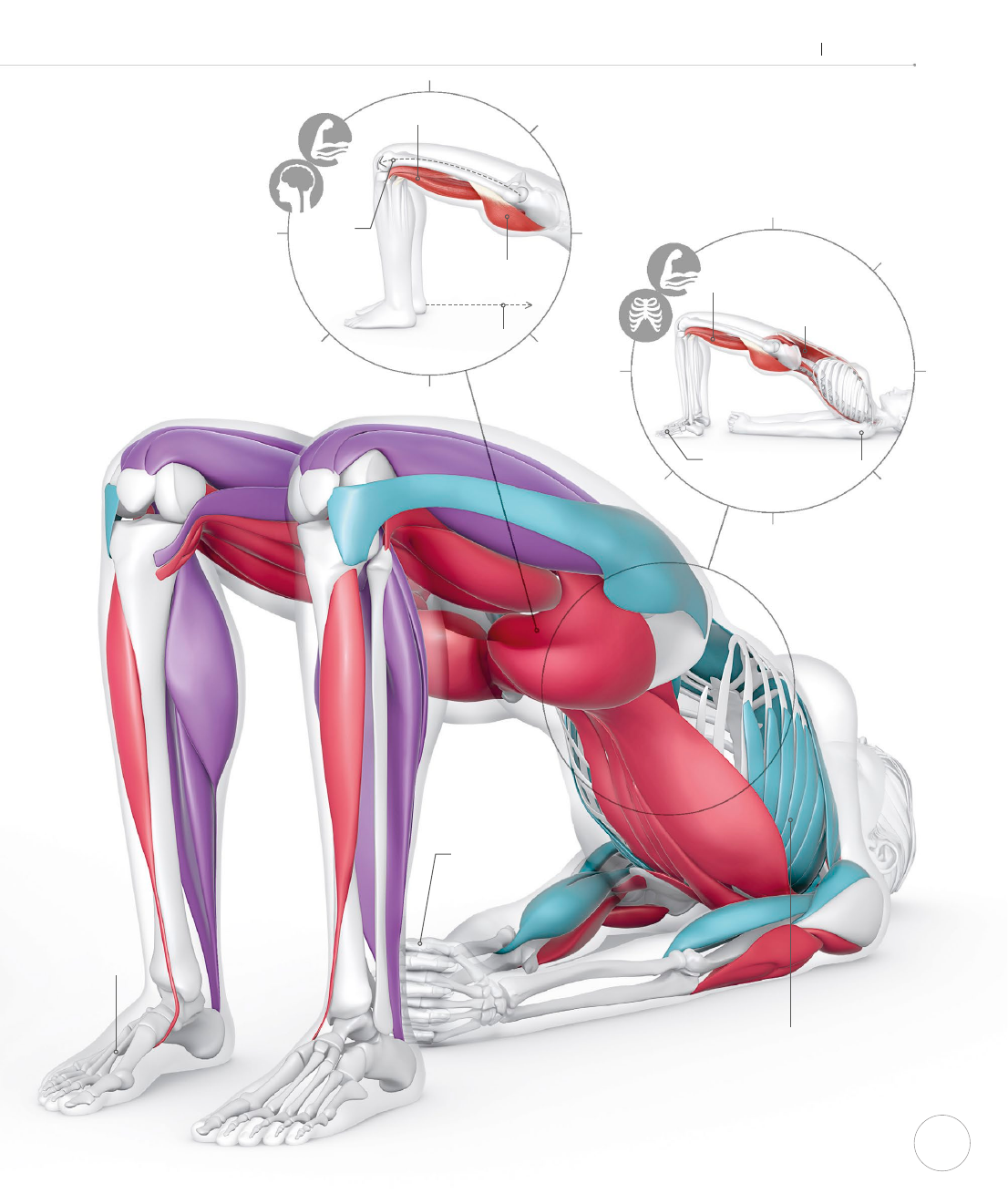
136
THE ASANAS
Inversions
Bridge is a gentle and accessible backbend that can
help relieve back pain, particularly discomfort caused
by sitting down too much. It is a calming pose, used by
many to wind down at the end of a practice or at the
end of the day in preparation for sleep.
THE BIG PICTURE
Bridge pose stretches the muscles along the front of your
body—including your thighs, hips, abdomen, and chest.
The back of your body strengthens—including your thighs,
buttocks, back, and shoulders—as the muscles here work
to support and hold you in an elevated backbend.
BRIDGE
Setu Bandhasana
Torso
Your spinal extensors engage
while your abdominals stretch.
Your pectorals—particularly
your pectoralis minor
muscles—stretch as you
broaden your chest. Your
middle and lower trapezius
work with the rhomboids to
retract and stabilize your
scapulae, while your serratus
anterior muscles stretch.
Neck and arms
Your cervical exors engage to
ex your neck while your cervical
extensors slightly stretch. Your
posterior deltoids, latissimus
dorsi, and teres major muscles
engage to extend your shoulders.
Your triceps extend your elbows.
Spinal extensors
Serratus anterior
Pectoralis minor
Psoas major
Quadratus lumborum
Rectus abdominis
Spine
Longus muscles
Splenius muscles
Sternocleidomastoid
Deltoids
Triceps brachii
Biceps brachii
KEY
Joints
Muscles
Engaging
Engaging while
stretching
Stretching
US_136-137_Bridge_01.indd 136 20/09/2018 21:10

137
ALIGNMENT
Engage your inner thighs, bringing them
toward parallel. Look up toward the sky and
avoid turning your head while in the pose.
Hips press
upward
Breastbone pressed
toward chin
Hands clasped
Shoulder blades
squeeze together
Thighs
parallel
Feet hip-distance
apart, directly
under knees
Lower legs
Your calf muscles
stabilize while in a neutral
position. Your tibialis
anterior stabilizes your
ankles in dorsiexion.
Thighs
Your hip extensors—including
your gluteus maximus—
engage, while your hip exors
stretch. Your quadriceps
engage while lengthening,
synergizing with your
hamstrings to stabilize your
thighs. Your adductors engage
as you squeeze your thighs in
toward parallel.
Gluteus maximus
Hip
Tensor fasciae latae
Biceps femoris
Vastus lateralis
Rectus femoris
Soleus
Tibialis anterior
Gastrocnemius
Ankle
Knee
Knees hip-
distance apart
US_136-137_Bridge_01.indd 137 20/09/2018 21:10

138
BRIDGE
Setu Bandhasana
Leg lifts
energetically
upward
CLOSER LOOK
Backbends like this could also be considered
“heart openers,” because broadening your chest
area may leave you feeling openhearted. Your
glutes strengthen and tone.
Blood rush
Some claim that inversions send a rush of oxygenated
blood to your head. This may happen briey but your brain
regulates its blood ow (see p.134). If you do get a head
rush, come down. Backbends are called “heart openers”
because they create space in your chest. Be aware of this
sensation and feel your ribcage expand as you inhale.
Hips press
directly upward
Rectus
abdominis
stretches
Hips are
extended
VARIATION
To challenge your pelvic
stability, try raising one
leg while in Bridge pose.
Engage your core muscles
to support your back as
you raise one leg upward.
Focus on keeping your
hips parallel. Press your
standing foot into the
floor to find support.
Feel your ribcage
expand three-
dimensionally
Lungs fill
chest cavity as
you inhale
Heart pumps
oxygenated blood
around body
Send knees away
from torso to find
length through
the hips
ANTERIOR VIEW
Oxygenated blood
flows to brain
US_138-139_Bridge_02.indd 138 20/09/2018 21:10

139
THE ASANAS
Inversions
Closed chain movement
A kinetic chain is a line of joints and muscles that
aect each other. Bridge is a closed chain because
both ends of the chain (shoulders and feet) are xed
in place. In an open chain, one side of the chain is
not xed, like the arms in Warrior poses. Closed
chains tend to be more stable.
Glute engagement
You must engage your glutes
and hamstrings to extend
your hips into Bridge. However,
you should not do this by
forcefully clenching together
your buttocks. Instead,
isometrically engage by gliding
your heels back toward your
head (without moving them on
the mat) while imagining
driving your knees forward.
Feet are
flexed (in
dorsiflexion)
Pull heels
backward
Gluteus
maximus
Muscles along
chain stabilize
joints
Transversus
abdominis
engages
Shoulders are
fixed
Feet are
fixed
Send
knees
forward
Hamstrings
Hands can be
clasped or palms
face down at
shoulder width
Serratus anterior
stretches as your
shoulder blades are
drawn together
POSTERIOR–LATERAL VIEW
US_138-139_Bridge_02.indd 139 02/11/2018 14:04
..................Content has been hidden....................
You can't read the all page of ebook, please click here login for view all page.
